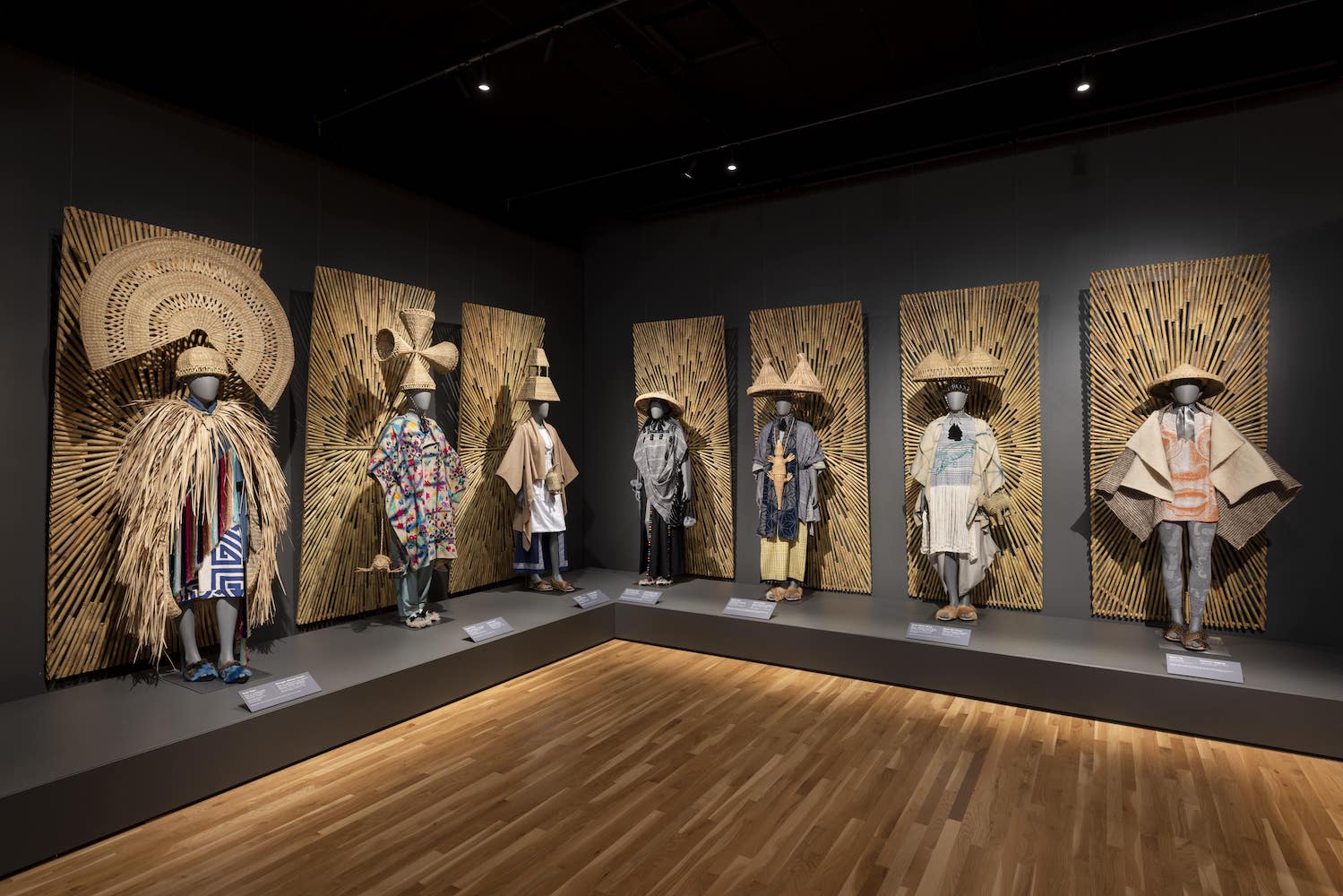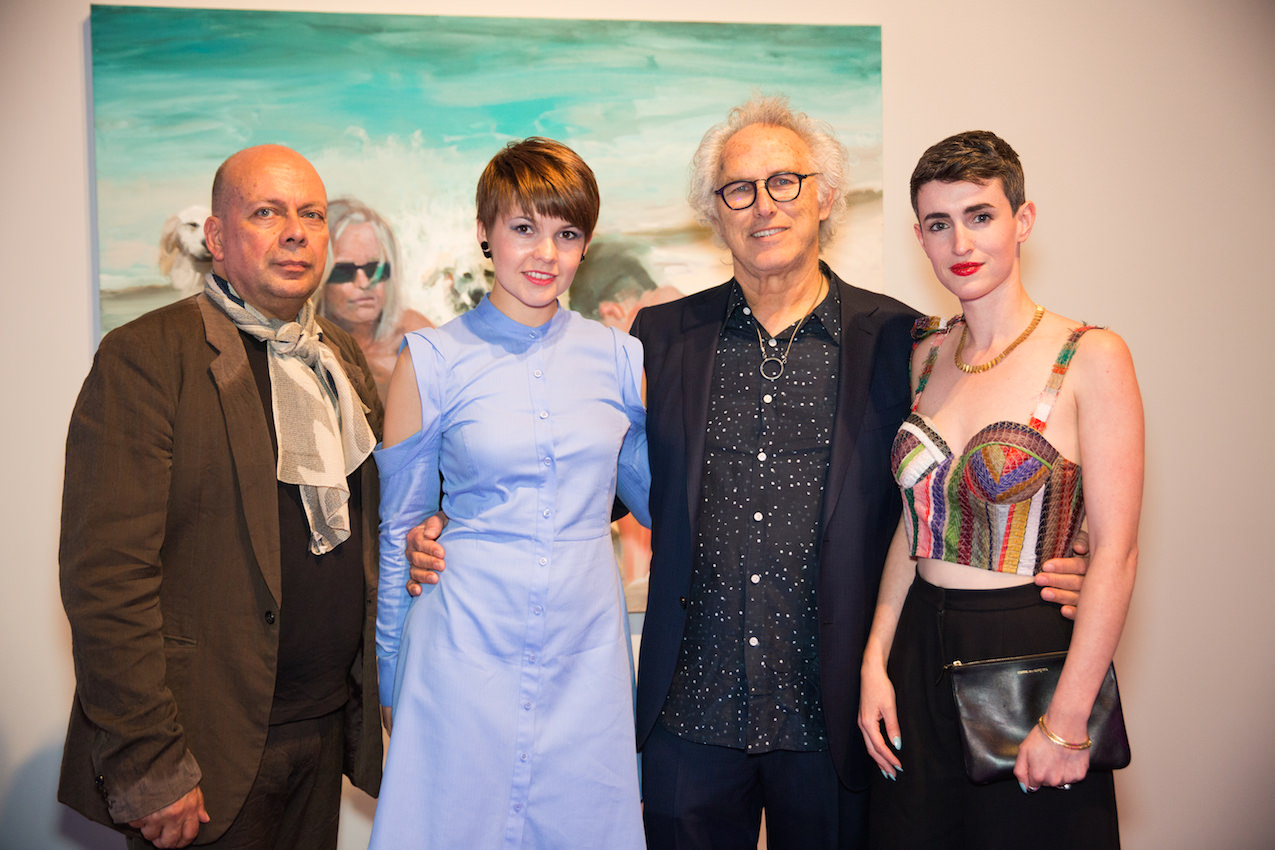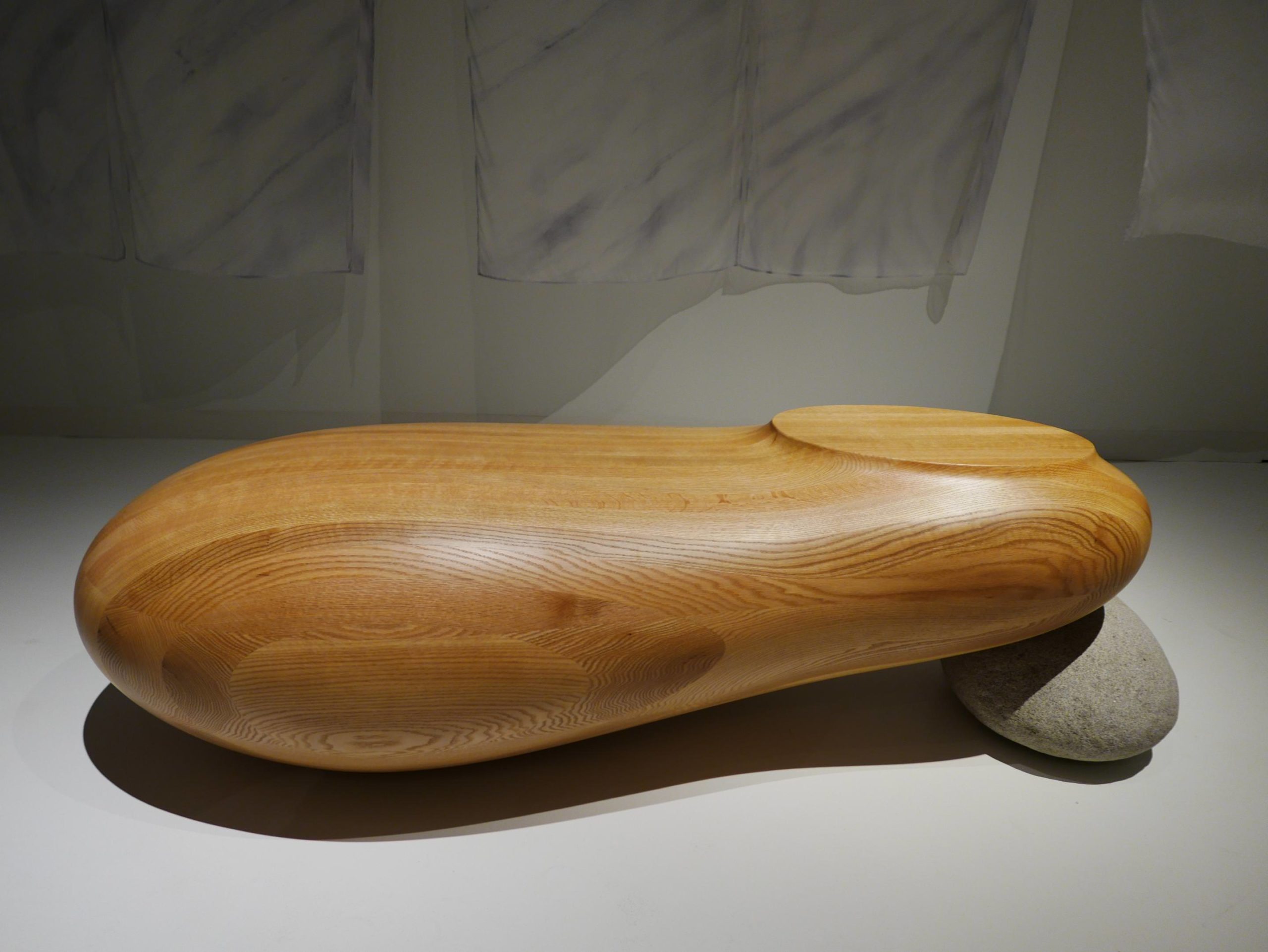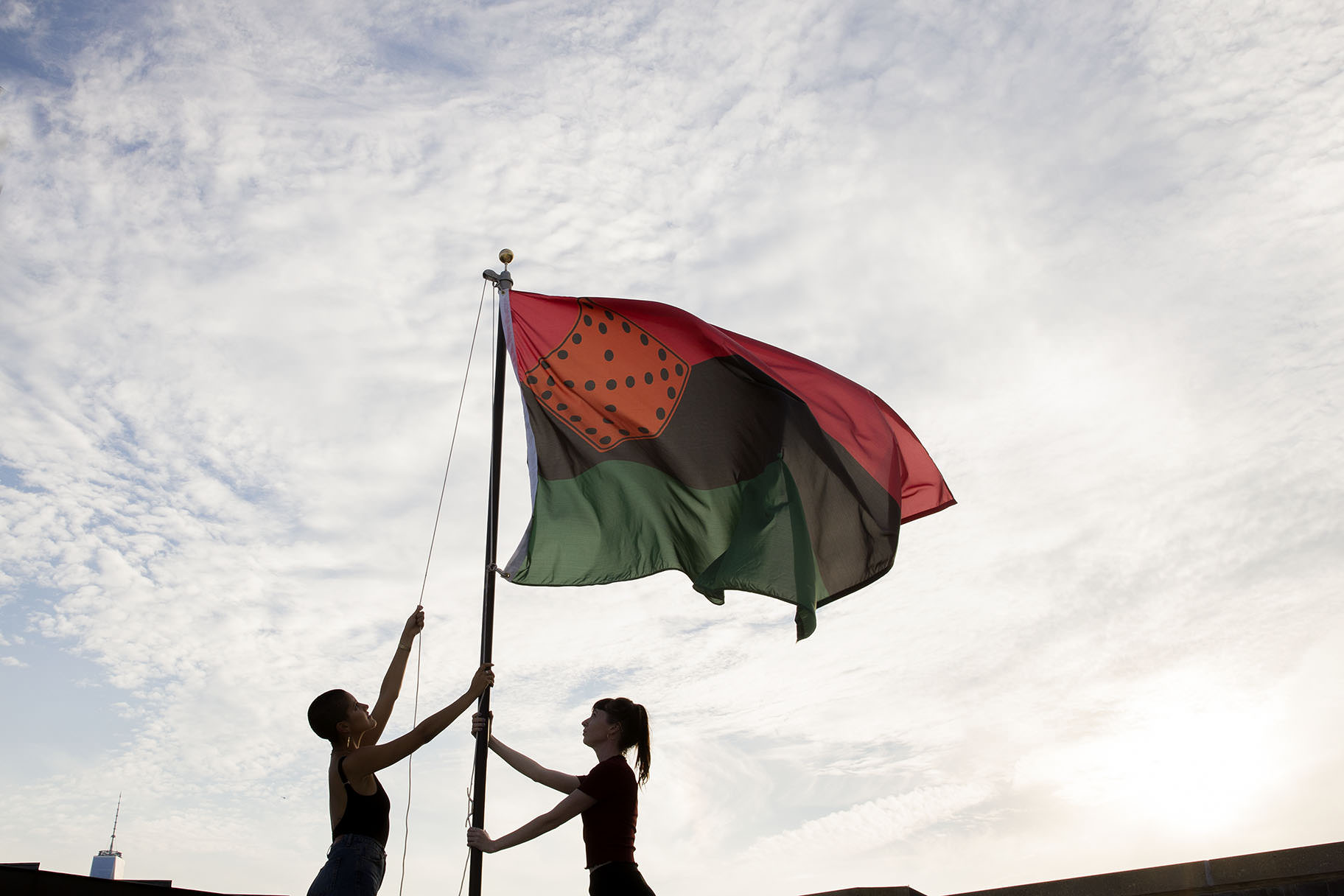Carla Fernández and Pedro Reyes Share a Life in Art and Fashion
Carla Fernández and Pedro Reyes met at Ibero University in the 1990s. Wearing purple velvet pants, Fernández caught the attention of Reyes, and has held it for the decades since. Today, the Mexico City–based partners and parents are known for their respective creative practices, with Fernández working in fashion design and Reyes rooted in art. Together with their two children, they live in a Brutalist concrete home that is filled with his sculptures, her textiles, their children’s artwork, books, and objects that tell their shared tale.
In their individual practices, too, both creators tell captivating stories about Mexican culture. For many years, Fernández has run a traveling design lab throughout the country, visiting indigenous communities that create textiles by hand. By working with local artisans on garments and accessories, she’s helping to preserve traditional techniques that run the risk of being forgotten. Now, more than 100 artisans in 16 Mexican states collaborate with Fernandez to create new, sustainable designs with ancient techniques and traditions.
Reyes, too, perpetuates a practice that hinges on storytelling and craft. Through mixed-media presentations—including sculpture, architecture, video, and performance—he communicates social and political issues in Mexico and around the world. From turning confiscated guns into musical instruments to establishing pop-up clinics to treat urban malaise, Reyes creates a dialogue around domination, violence, and corruption.
Together, the couple shared with Whitewall how their individual and collective interests guide their personal and professional lives, and what they’re looking forward to in 2023.
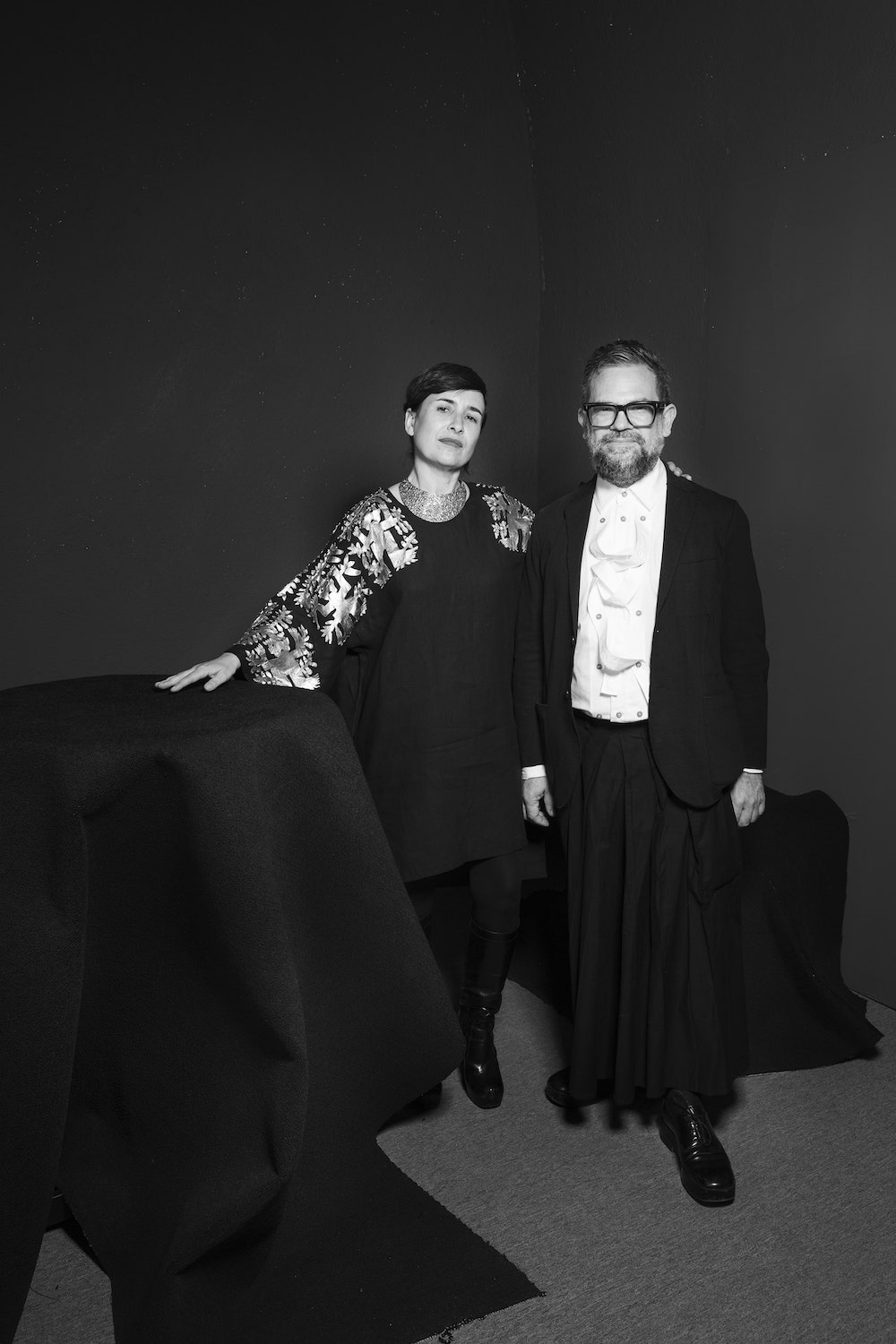
Carla Fernández and Pedro Reyes, portrait by Yvonne Venegas.
Carla Fernández is Influenced by First Nations Attire
WHITEWALL: Carla, where did your interest in fashion begin?
CARLA FERNÁNDEZ: When I was very young, I realized the beauty of the First Nations attire, and I immediately saw it as a fashion statement and revelation. I also have the amazing fortune of living in Mexico—a country that has 68 different languages, therefore Mexico also has 68 different First Nations, and most of them have beautiful handmade dresses. The way that these attires are made is special. They are made to last, they are made to be worn year after year, and the techniques they are made with are ancient. Some of these techniques are over a thousand years old—like the backstrap loom. This is real sustainability! This is the real way of making clothing in a way that is in accordance with nature, and it expresses attire in a cultural way.
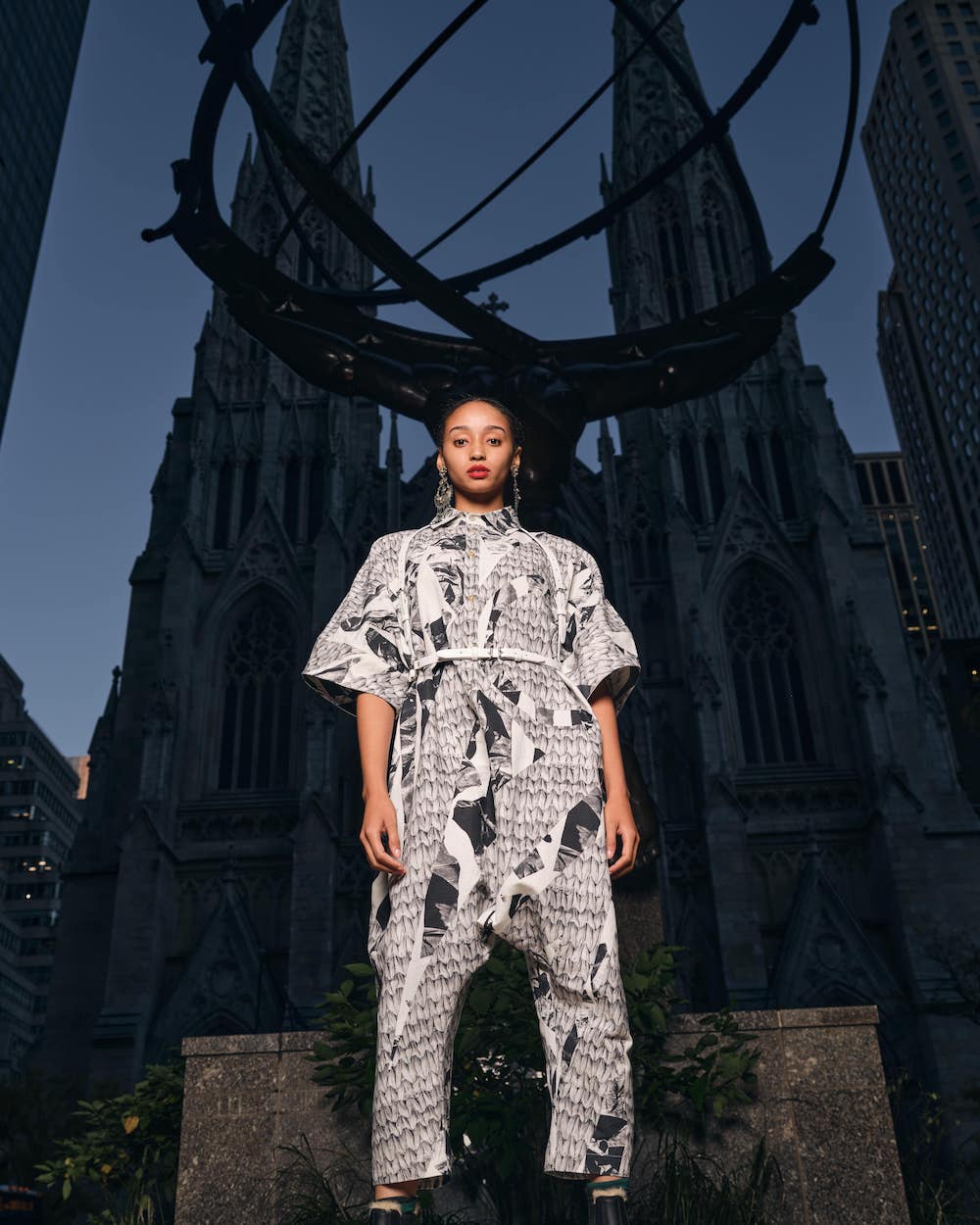
Carla Fernández’s presentation at Rockefeller Center in 2022, photo by Art Comes First.
WW: When did you realize you wanted to personally create garments in collaboration with these local women?
CF: When I realized, during my several trips with my family because of my father’s job, the beauty of these attires compared to the industrial processes and the soulless clothing I was wearing when I was a young girl, I understood that we were talking about what in the Western world is called “haute couture.” I had two choices—one was only getting inspired by these amazing clothing as a designer, or I could work directly with the best designers in my country whom I am sure are the artisans of Mexico. That is how we started these creative collaborations in the making of our collections, making new designs with ancient techniques, working with more than a hundred artisans in over 16 states around Mexico.
WW: Beyond what you wear, what does fashion mean to you?
CF: For me fashion means the most direct way of expressing ourselves. Actually, the root of “textile” is “text.” Fashion is like an open book, and people can read you through what you are wearing. That’s why I always say that this is one of the most vivid and most important ways of expressing that we have.
Carla Fernández and Pedro Reyes Infuse Art into Their Parenting Approach
WW: Does being a parent impact your approach to working or collecting art?
CF: We travel the world with both of our kids, Laima and Cristóbal. They have been to many different museums, have seen many sculptural gardens, and have visited the most incredible temples and pyramids in many different countries. In our house, you will find a lot of Pedro’s work, and several other artists, but you will also find crafts from around the world, and art made by Laima and Cristóbal. They both have had this experience of living in a sculptural house, and they have it in their DNA.
They have this part of the family history, also coming from their grandparents. We have paintings made by Laima alone, or together with Pedro, and Cristóbal uses technology to create art. I think this is how art has impacted us as a family every day of our lives.
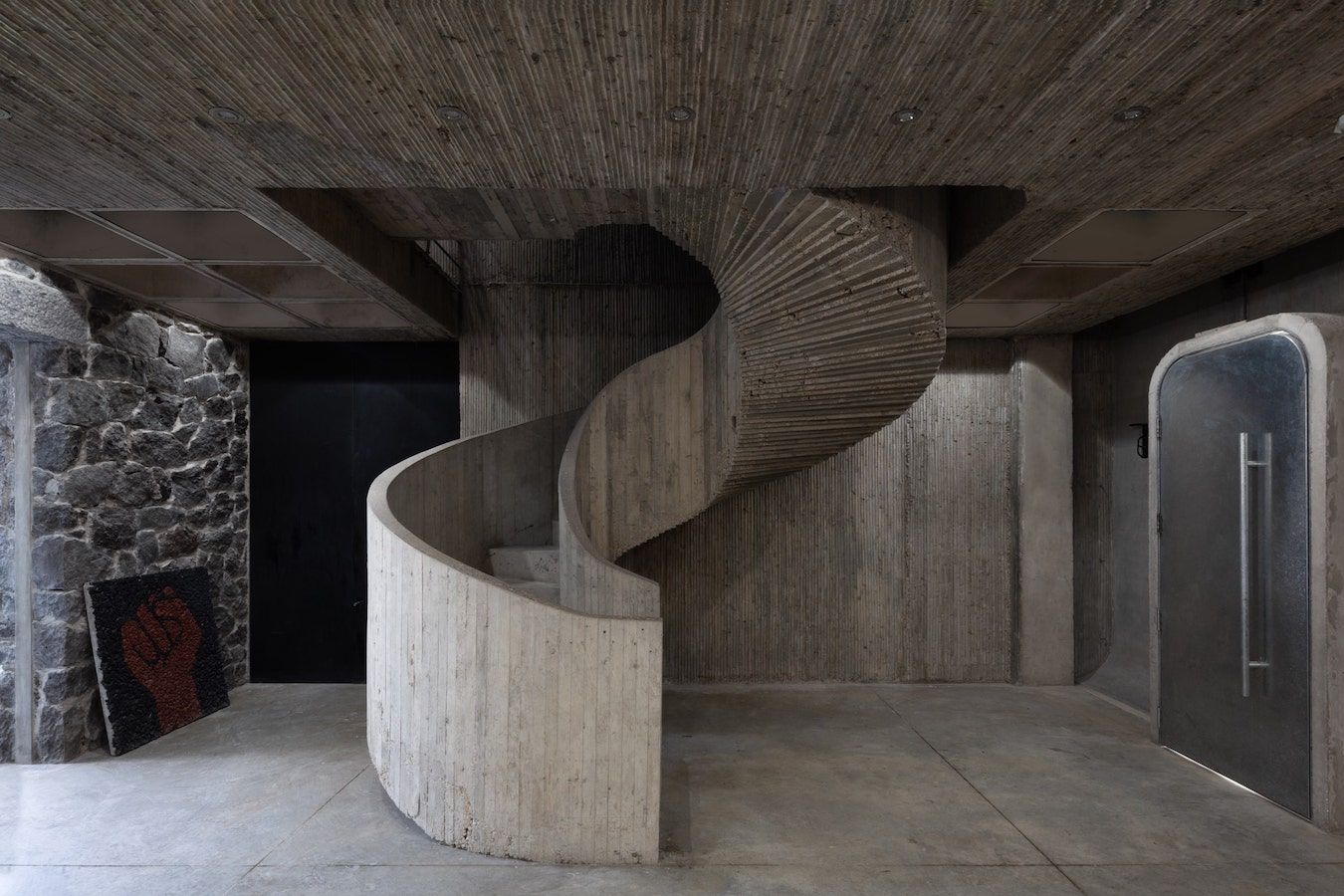
Carla Fernández and Pedro Reyes’s home, courtesy of Carla Fernández and Pedro Reyes.
“Fashion is not ephemeral, and tradition is not static.”— Carla Fernández
WW: Both of your practices hinge on telling stories about people—in political situations, in indigenous communities, and more. What stories do you feel are most important to tell through your works?
CF: The most important message I want to convey through my work is that different fashion systems exist. There tends to be an idea of only one fashion system—that tradition is static and fashion is ephemeral. In our fashion house, we believe the opposite. Fashion is not ephemeral, and tradition is not static. That’s the way we have always worked in creative collaborations with artisans; there are many ways of making fashion. Please read our “Manifesto of Fashion as Resistance”; we encourage you to do so to understand our identity as a fashion house and the ideals that we abide by.
Pedro Reyes’s Exciting Studio Practice
WW: Pedro, what is your workshop at home like? What might a typical day in the studio be?
PEDRO REYES: Our space is full of activity. On an average day, there’s nearly 30 people that are in the studio doing a wide variety of activities—from stone carving to script writing, from welding to painting to publishing, which makes it an extremely exciting environment as it is always changing shape. So every time you visit you will find the place entirely changed, as we often create full-scale mockups of how the exhibitions will look, or wield building work, et cetera.
WW: You have a multifaceted practice, yet sculpture is always at the center of your work. How does it take on different forms?
PR: Sometimes it is social sculpture, or as people call it, “social practice,” which is work that involves participation. There is also classical sculpture, which involves the making of physical works that have an autonomous life. But in my mind, they are both connected and equally important.
WW: How are you balancing a use of raw materials with technology?
PR: My work is usually born from preexistent forms, and aims at producing real life forms and models of action inside the existing reality, whatever the scale. By combining the ancient and the modern, you can make something that is timeless.
“One should not be afraid of large and complicated subjects.”— Pedro Reyes
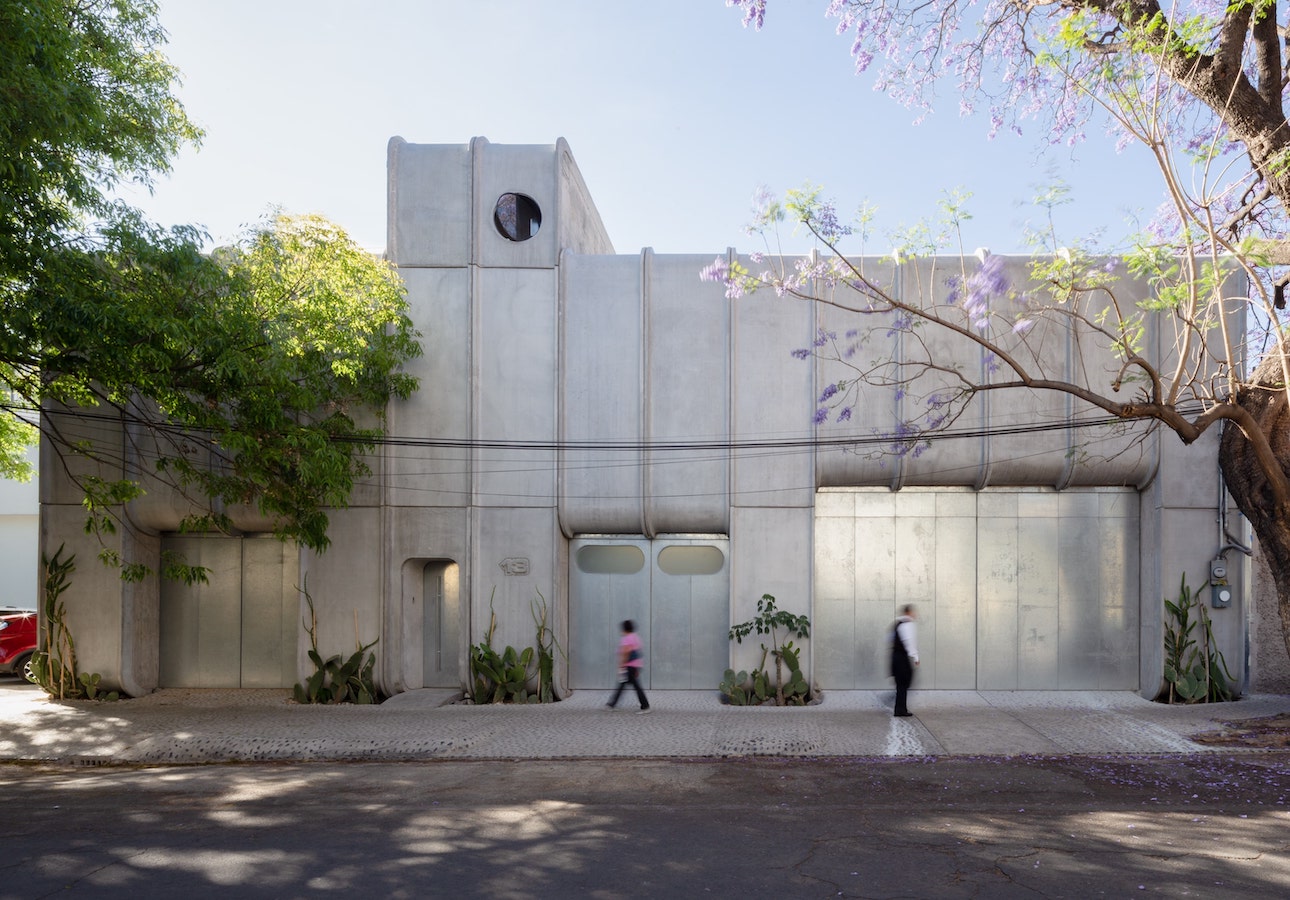
Carla Fernández and Pedro Reyes’s home, courtesy of Carla Fernández and Pedro Reyes.
WW: How are you being called to action today?
PR: One should not be afraid of large and complicated subjects. We are faced with planetary problems that are very hard to get your head around, yet it is very important to know that these questions should not be left to specialists. Right now, I am working intensively in the history of nuclear disarmament movements, and most progress done today on this field is done on the periphery, among countries that don’t have nuclear weapons. As artists, we’re trying to help gain world support to the Treaty on the Prohibition of Nuclear Weapons (TPNW), which has been endorsed by over 90 countries, mainly from Latin America and Africa, but it is sad to see that countries that belong to NATO don’t support the TPNW because since the invasion of Ukraine, Europe has been very scared of Russia.
However, if a nuclear weapon is used, it doesn’t matter if it came from a country belonging to NATO or Russia, your kids will have leukemia anyway. The only way to be sure that nuclear weapons are never used is to create massive outrage against these weapons of mass destruction, and to acknowledge that the only use of nuclear weapons is the mass murder of civilians, the reason why it is very important to bring back the anti-nuclear sentiment, which peaked in the 1980s but is ever more urgent today.
WW: Earlier this year at SITE Santa Fe in New Mexico, you opened “Direct Action” (February 3–May 7). What did the show speak to?
PR: It is a small survey that features both social and classical sculpture that puts the principle of direct action in practice, which is to transform reality. There are a lot of works in the show that deal with the issue of disarmament—from small weapons to nuclear weapons—and features a new film that I made in New Mexico with activists, including First Nations’ downwinders from the Acoma and Navajo nations, that addresses the subject of nuclear colonialism.

Carla Fernandez, Installation view of “Casa de Mode: A Mexican Fashion Manifesto,” courtesy of the Denver Art Museum.


